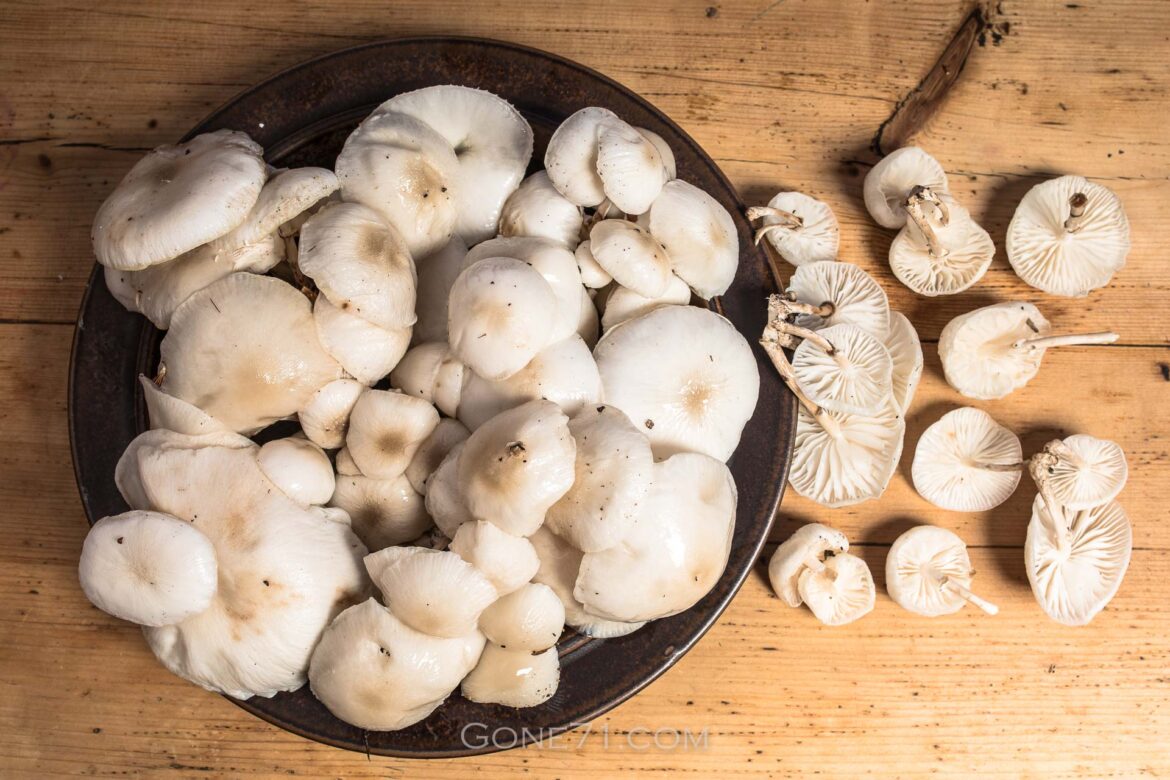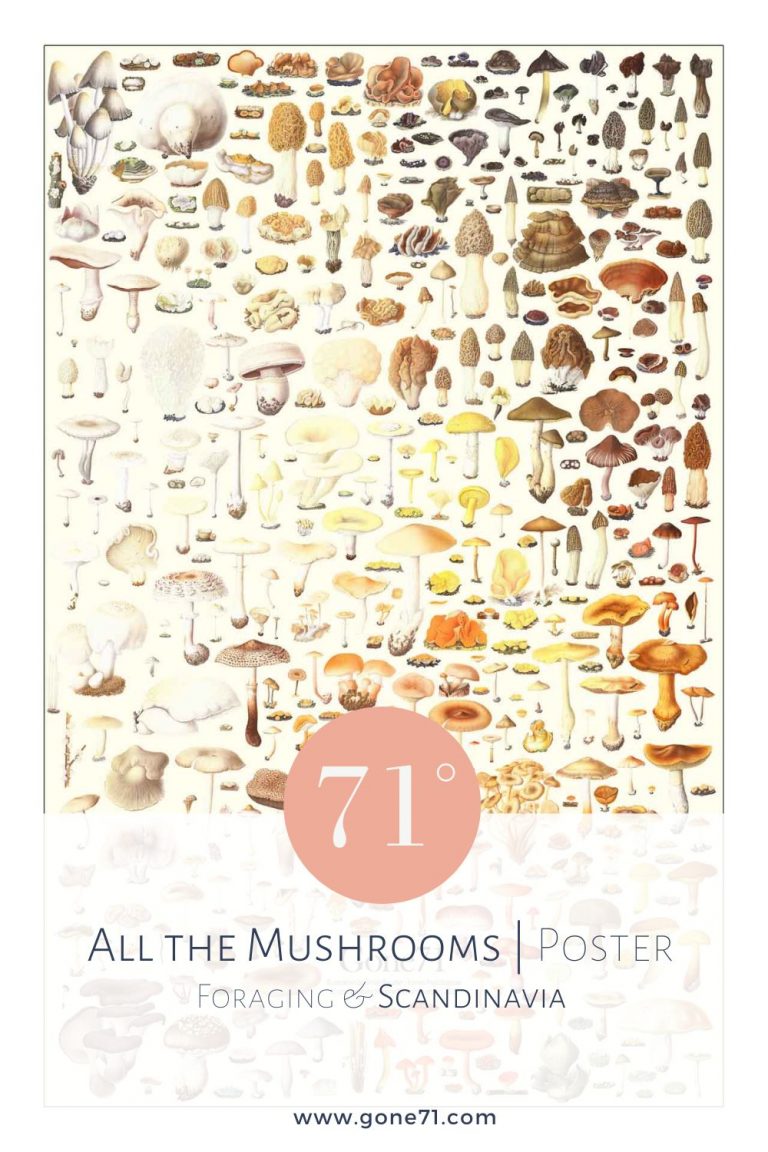nor.: Porselenshatt| swe.: Porslinsskivling | fin.: Posliinisieni | dt.: Buchen-Schleimrübling, Beringter Schleimrübling | sci. syn.: Oudemansiella mucida
Mucidula mucida, also known as the porcelain fungus, is a real eye catcher with its shiny and sparkling white appearance. This is a unique and fascinating mushroom that is often overlooked by foragers and mushroom enthusiasts. With its delicate white cap and slimy texture, it may not be the most appealing mushroom at first glance. However, once you learn to appreciate the porcelain fungus, you can enjoy its culinary qualities.
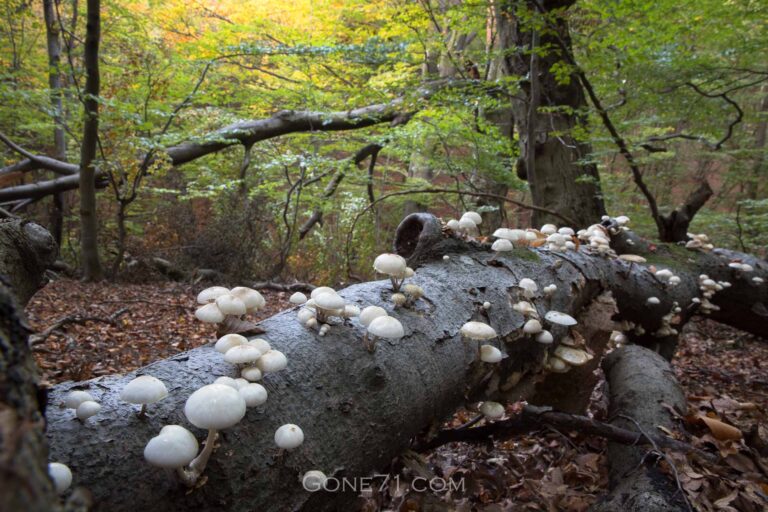
Appearance & habitat of the Porcelain fungus
height: 10cm
cap diameter: 2-8cm
months: July-November
colours: white, grey, porcelain
habitat: dead wood, porcelain
smell: neutral
consumption: cooked
charakteristics: slimy texture, ring, grows on wood
It is typically small, with a cap of 2-8 cm in diameter and a stem of 1-10cm in length. The cap is typically convex, then flattens with age and is of a porcelain white to dark gray color. The stem and ring are similarly colored, slimy and fragile. The gills are white, broad, and closely spaced. The mushroom is edible and has a mild, sweet taste. It is found in most parts of Europe as well as North America.
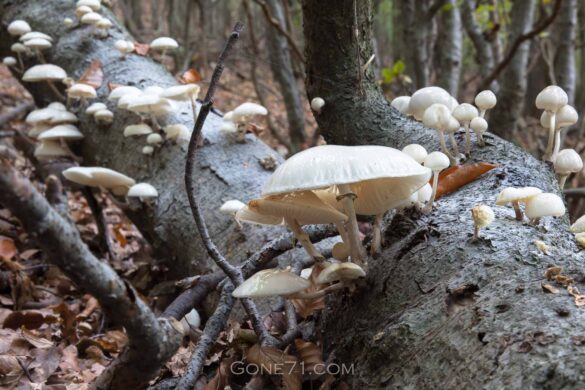
Only harvest mushrooms that you can identify with 100% certainty! The consequences can be life threatening if you are wrong. If you have the slightest doubt: do not eat the mushroom! This is not a mushroom guide! For correct identification consult a mushroom expert.
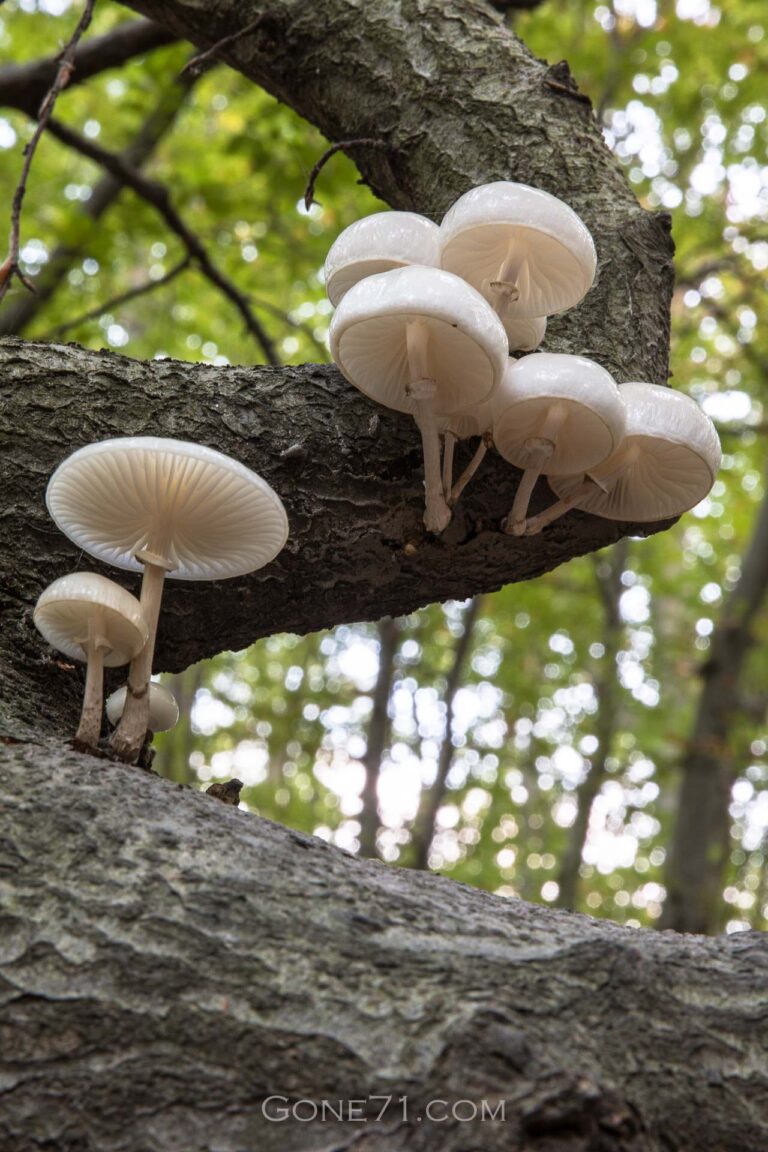
Lookalikes of the Porcelain fungus
Due to its habitat and appearance Porcelain fungus are easy to identify. But of course, it is possible to confuse Mucidula mucida with other mushrooms, particularly other slimy mushrooms.
Always take special care when collecting white mushrooms with white gills, since there are many (fataly) posionous species.
Some other species that may resemble Mucidula mucida include:
- Limacella guttata (weeping slimecap), which is similar in appearance, but typically has a yellowish-brown cap and stem and does not grow on trees.
- Hemimycena lactea (milky bonnet), which is a smaller mushroom with a similarly colored cap and stem, but has a more delicate and fragile appearance.
- Hemimycena tortuosa (dewdrop bonnet), which has a similar size and shape, but has a more yellowish-brown cap and stem.
Like always, it’s worth noting that there are many variations of mushrooms that can grow in different conditions, so it’s important to be careful when identifying mushrooms in the wild. It’s best to consult a field guide or an expert before consuming any wild mushrooms.
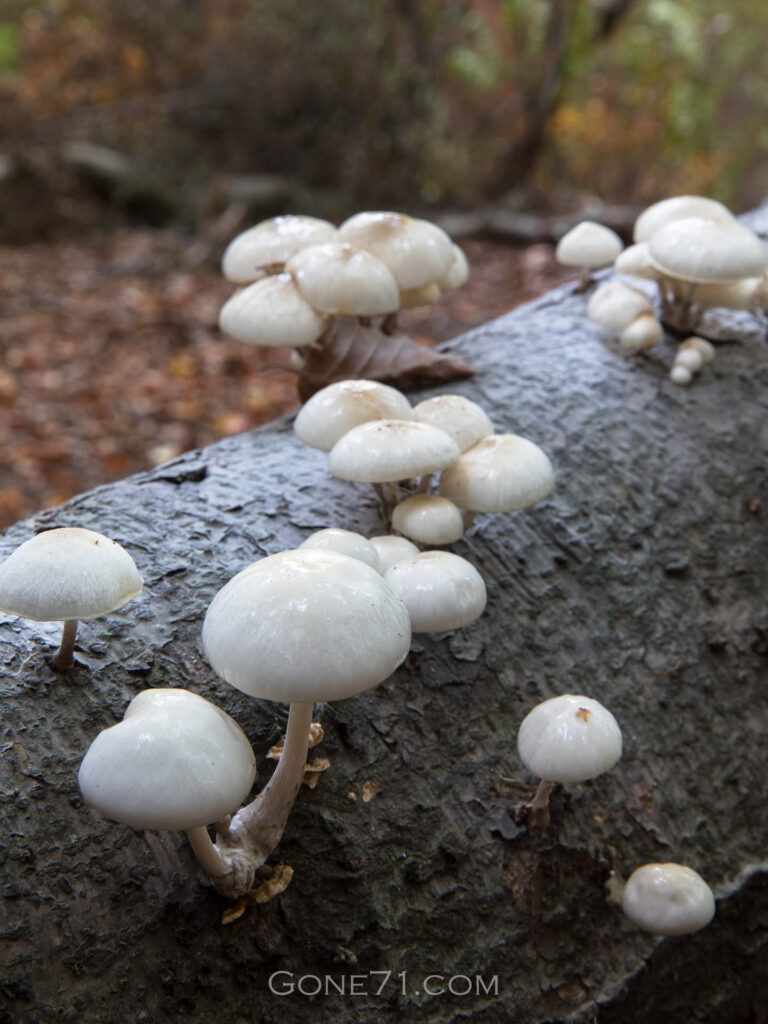
Cleaning Porcelain fungus
Cleaning Mucidula mucida, or any slime mushroom, can be a bit tricky due to its slimy texture.
- Gently brush off any dirt or debris from the cap and stem using a soft-bristled brush.
- If you use the mushroom in soups or stews where you do not have to fry it, you can also rinse it thoroughly under cold running water. Be sure to pay special attention to the gills and under the cap, as these areas can collect dirt and debris.
- If the slime is still present, you can gently rub the mushroom with a clean kitchen towel or a piece of bread to remove it.
It’s also worth noting that some of the slimy texture can be retained even after cleaning, and can also be removed by cooking.
We usually don’t spend much time worrying about the slimy texture, but cook it as it is.
Porcelain fungus in the kitchen
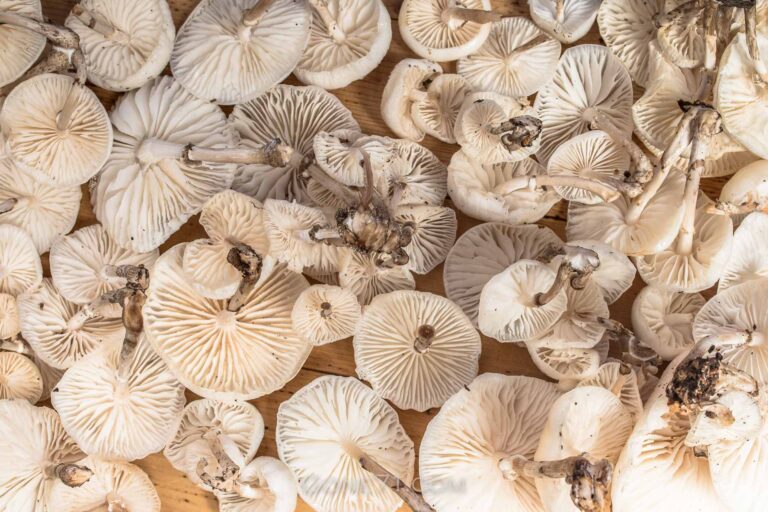
Yes, the slimy texture of Mucidula mucida is one of the reasons why it is not widely consumed by people. Some people find it unappetizing or off-putting. However, others may enjoy the unique texture and taste of the mushroom. As with any food, personal taste can vary greatly. It’s also worth noting that the slimy texture usually is removed by cooking.
The texture is surprisingly firm after cooking and reminds us distantly of calamari in consistency and also taste. We consider them very good.
There are many ways to prepare Mucidula mucida, and different methods can bring out different flavors and textures. Here are a few popular ways to prepare the porcelain fungus:
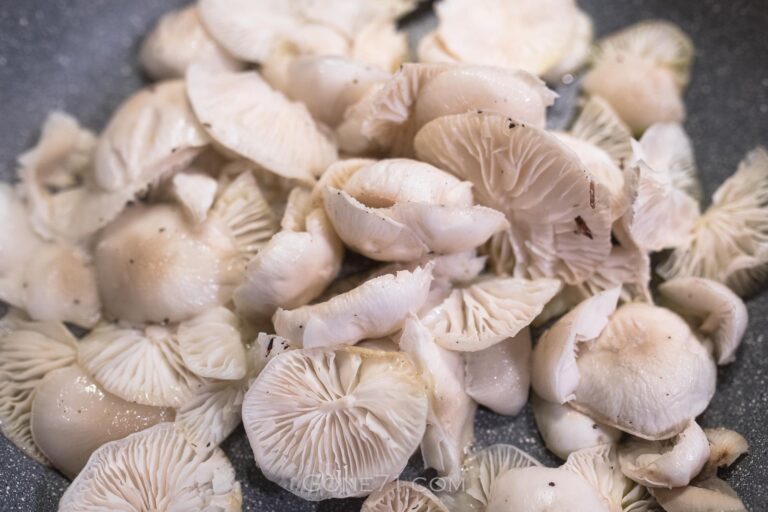
- Sautéing: This is a great way to cook the mushroom quickly and bring out its natural sweetness. Simply heat some butter or oil in a pan over medium-high heat and add the mushrooms. Cook for 2-3 minutes, or until they are tender and slightly browned. Maybe this is our favorite way of preparation.
- Frying: This method will give a crispy texture to the mushroom. Simply roll the cleaned mushroom in flour, then fry in oil for a few minutes until golden brown.
- Grilling: This is a great way to cook the mushroom during the summer or if you want a smoky flavor. Simply brush the mushroom with oil, season with salt and pepper, and grill for a few minutes on each side.
- Soup or stew: Mucidula mucida can also be added to soups or stews to give them an interesting texture and flavor.
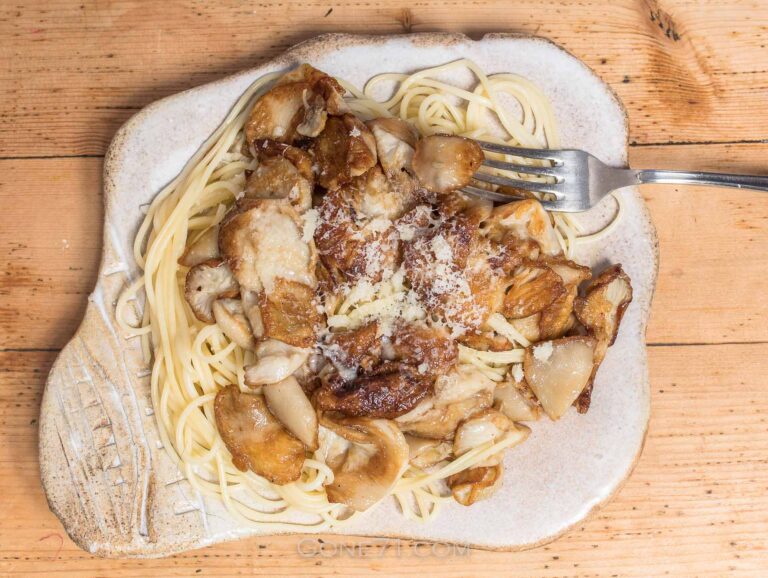
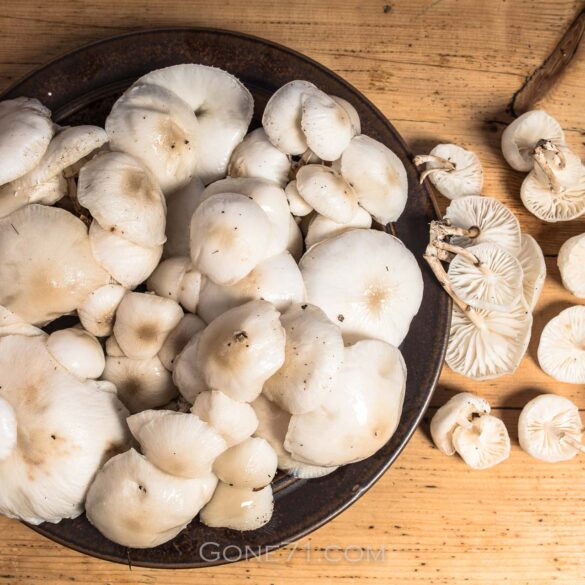
Spaghetti with Sauteed Porcelain Fungus and Parmesan
Ingredients
ngredients:
- 8 oz spaghetti
- 1/2 pound of Mucidula mucida mushrooms, cleaned and sliced
- 1/4 cup of grated parmesan cheese
- 2 cloves of garlic, minced
- 2 tbsp of olive oil
- Salt and pepper to taste
- Fresh parsley or basil for garnish
Instructions
- Bring a large pot of salted water to a boil and cook the spaghetti according to package instructions until al dente. Drain and reserve 1 cup of pasta water.
- In a large skillet, heat olive oil over medium heat. Add the minced garlic and sauté until fragrant, about 1 minute.
- Add the sliced Mucidula mucida mushrooms to the skillet, season with salt and pepper, and sauté until the mushrooms are slightly browned, about 5-7 minutes.
- Remove the skillet from heat.
- Add the cooked spaghetti to the skillet and toss to combine with the mushrooms and the parmesan. If the pasta seems too dry, add a little bit of reserved pasta water to achieve the desired consistency.
- Serve the spaghetti in bowls and garnish with fresh parsley or basil on demand.
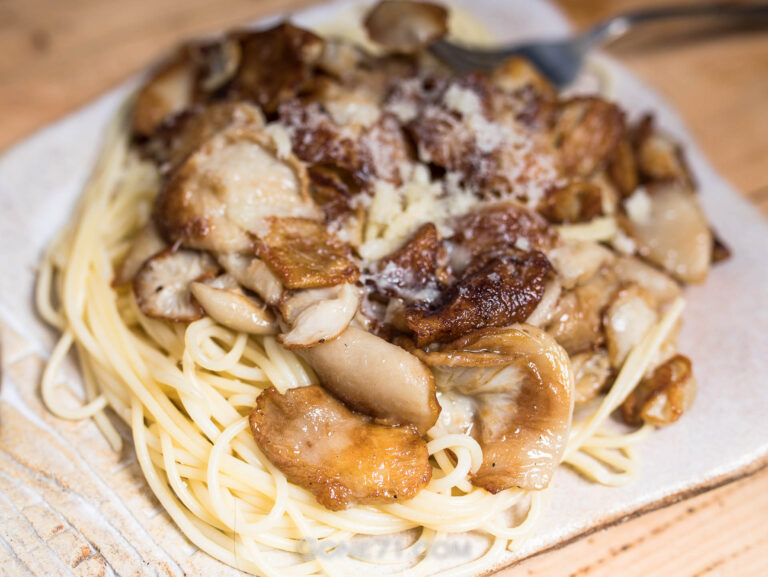
We have compiled this overview with the best of knowledge and belief, but do not claim to be complete and reserve the right to make errors.
Learn more about poisonous mushrooms and mushroom poisons here
↓↓↓
Find some inspiration in other mushroom recipes
↓↓↓


